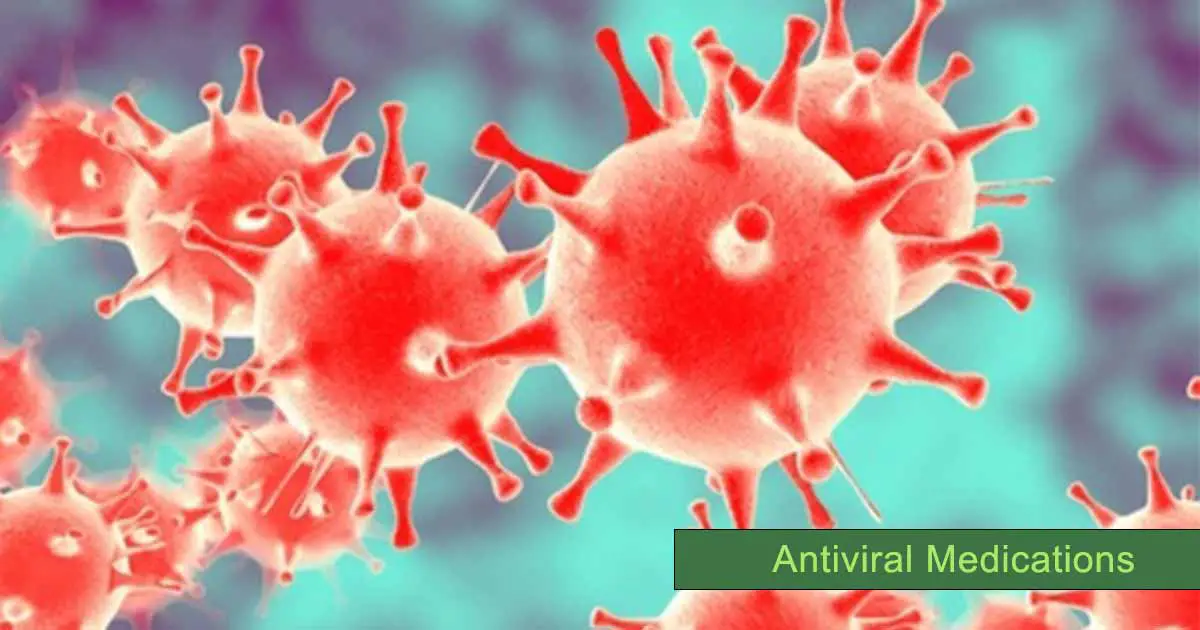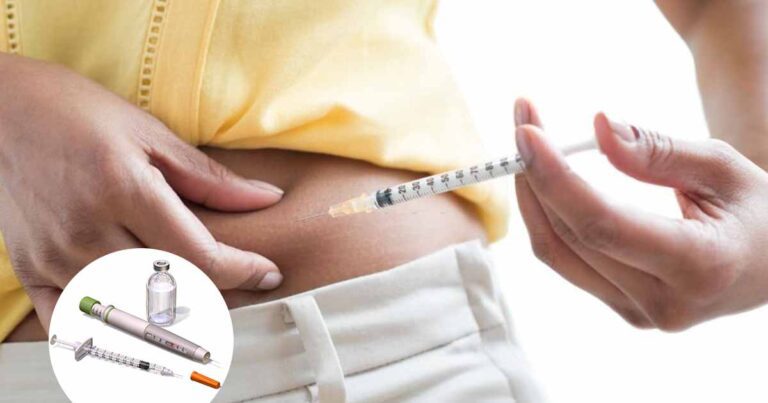The causative agent of viral diseases is the virus. Because of the rapid replication of the virus in living cells, the virus is a huge threat to humanity. That is why antiviral medications are important in the healthcare delivery system.
Also, viruses are difficult to control as they have the ability to resist and evade (escape) detection. This makes antimicrobials like antibiotics (used to fight against bacteria) and antifungal agents (used to fight fungi) not effective against them. Antiviral agents are effective in combating viral diseases.
Therefore, antiviral medications and agents are antimicrobials specifically used to combat viral diseases.
Unlike most antimicrobials, like antibiotics that destroy pathogens and cure infections, the antiviral medications only inhibits the growth and development of a pathogen.
For instance, in the treatment of HIV, the antiviral drug works not by eliminating the pathogen but by inhibiting its development process and making it inactive to ease symptoms.
A virus does this in either of the following ways:
- Blocking receptors so that the virus cannot bind to the cells of the host.
- Boosting the immune system and helping it fight against viral infection.
- Lowering or reducing the viral load (quantity of active virus) in the host cells.
Antiviral agents differ in their mode of action; some are specific in their actions and some are broad spectrum.
Antiviral agents that are the specific fight against specific viruses while those that are the broad-spectrum fight against a wide range of viruses.
Classification of Antiviral Medications/Agents
There are various factors considered in the classification of antiviral medications/agents. Factors like chemical nature/enzyme inhibition, mechanism of action, and treatment protocol.
a. Classification based on Chemical Nature/Enzyme Inhibition
ai. Nucleoside RT inhibitors:
These are synthetic antiviral agents that act by inhibiting the enzyme polymerase. They are further classified into four:
i. Purine nucleosides and nucleotides
The commonest examples are: Acyclovir, ganciclovir, valaciclovir, penciclovir, famciclovir, vidarabine, and abacavir.
Acyclovir (ACV) selectively acts on the herpes simplex virus (HSV) and varicella zoster virus. They use ACV in the treatment of herpes infections as disseminated herpes and HSV encephalitis. A higher dose of it is effective against varicella zoster virus infections.
ACV-TP is the active component in acyclovir. It competitively inhibits viral DNA polymerase, leading to viral DNA chain termination.
ACV has oral, topical, and intravenous dosage forms.
Ganciclovir is effective in the treatment of cytomegalovirus (CMV) diseases in hosts that are immunocompromised, like HIV patients.
Valaciclovir is used in the treatment of genital herpes infection.
Penciclovir is effective against infections caused by the varicella zoster virus, herpes simplex virus, cytomegalovirus, and Epstein-Barr virus (EBV).
ii. Pyrimidine nucleosides and nucleotides
Examples are cidofovir, idoxuridine, and trifluridine.
Idoxuridine is ideal for the treatment of HSV infections because it is more effective and less toxic to the host.
iii. Thiosemicarbazones:
An example is methisazone.
iv. Adamantane amines:
Examples are amantadine, rimantadine, somantadine, and tromantadine.
aii. Non-nucleoside RT inhibitors
They block nucleotides from binding by binding to the pyrophosphate binding site of the DNA polymerase. Thereby, inhibiting the replication of the virus.
Examples include efavirenz, foscarnet, loviride, emivirine, trovirdine, nevirapine, and delavirdine.
aiii. HIV protease inhibitors:
Examples are saquinavir, ritonavir, nelfinavir, atazanavir, amprenavir, lopinavir (combined with ritonavir in 4:1 ratio) and indinavir.
aiv: Viral entry inhibitor (fusion inhibitors)
Examples are fostemsavir, enfuvirtide.
b. Classification based on the Mechanism of Action
Antiviral medications combat viruses using two major mechanisms of action.
- Inhibiting the viral DNA polymerase. Examples of antiviral agent that use this mechanism are acyclovir and ganciclovir.
- Incorporating antiviral agents into viral DNA. Examples of antiviral agents that use this mechanism are pocapavir, imiquimod, and tecovirinet.
c. Classification based on the Treatment Protocol
ci. Treatment of Cytomegalovirus and Herpes Viruses Infections
- Acyclovir, Ganciclovir and Vidarabine are purine nucleotide analogues that can be used.
- Adefovir dipivoxil, a nucleotide analog, can treat HBV at low doses (10 mg/day)
- Lamivudine, Zidovudine and Stavudine are pyrimidine nucleotide analogues are alternatives.
- Foscarnet sodium is a phosphorus derivative that can be used.
- Entecavir is a newly approved anti-HBV drug.
cii. Treatment of Respiratory Virus Infection
Rimantadine and Amantadine are Adamantane derivatives are available for the treatment. Other medications are Zanamivir, Ribavirin, and Oseltamivir.
Amantadine and Rimantadine are tricyclic amines used to treat influenza A. They interfere with the function of viral M2 protein. M2 protein facilitates dissociation of the matrix protein from the nucleocapsid.
Zanamivir and Oseltamivir I are neuraminidase inhibitors used to treat influenza A and B. Vital neuraminidase initiates a process that releases virus from host cell surfaces. Zanamavir is an oral inhalation, while oseltamivir is an oral dosage form.
ciii. Treatment of HIV Infections
RT inhibition
- (a) Didanosine is a purine derivative that fights against HIV by RT inhibition.
- (b) Zidovudine and Stavudine are pyrimidine derivative that fight against HIV by RT inhibition.
- (c) Efavirenz, Delaviridine and Nevirapine are non-nucleoside derivatives that combat HIV infections through RT inhibition
Protease inhibition
Indinavir, Lopinavir, Ritonavir, Amprenavir, Saquinavir and Nelfinavir fight against HIV by inhibiting the protease formation.
Integration inhibition
It is a technique used by Zintevir to combat HIV infections.
civ. Hepatitis C Treatment
They are used in combination with interferon Alpha (pegylated). Example is Ribavirin. Ribavirin is a synthetic nucleoside analog active against many RNA and DNA viruses. Ribavirin is in aerosol and oral formulations.
Common Viral Diseases and the Medications
| Viral infections | Antiviral Medications |
| Hepatitis B | 3TC, FTC, adefovir, tenofovir, entecavir |
| Hepatitis C | pegIFN-ribavirin |
| Influenza | Amantadine, rimantadine, ribavirin, zanamivir, oseltamivir |
| Herpesviruses (HSV, VZV, CMV) | Acyclovir, famciclovir, valacyclovir, ganciclovir, cidofovir, formivirsen, valganciclovir |
| Respiratory syncytial virus | Ribavirin, RSV immune globulin, palivizumab |
| Papillomaviruses | IFN, ?cidofovir |
| HIV-1 | 21 approved drugs |
| Rhinoviruses | Tremacamra |
| Picornaviruses | Pleconaril |
| Varicella-Zoster Virus (VZV) Chickenpox | Acyclovir |
| Shingles | Acyclovir, valacyclovir, and famciclovir |
| Infectious mononucleosis | Acyclovir |
| Mumps, measles and rubella | MMR Vaccine |
Viral infections and medications.
Side Effects of Antiviral Medications
Some of the potential side effects from taking antiviral medications are nausea, vomiting, fatigue, dizziness, insomnia, dry mouth, joint pain, irregular heartbeats, depression. Most of the side effects depend on the dose and are reversible.
Sources:












